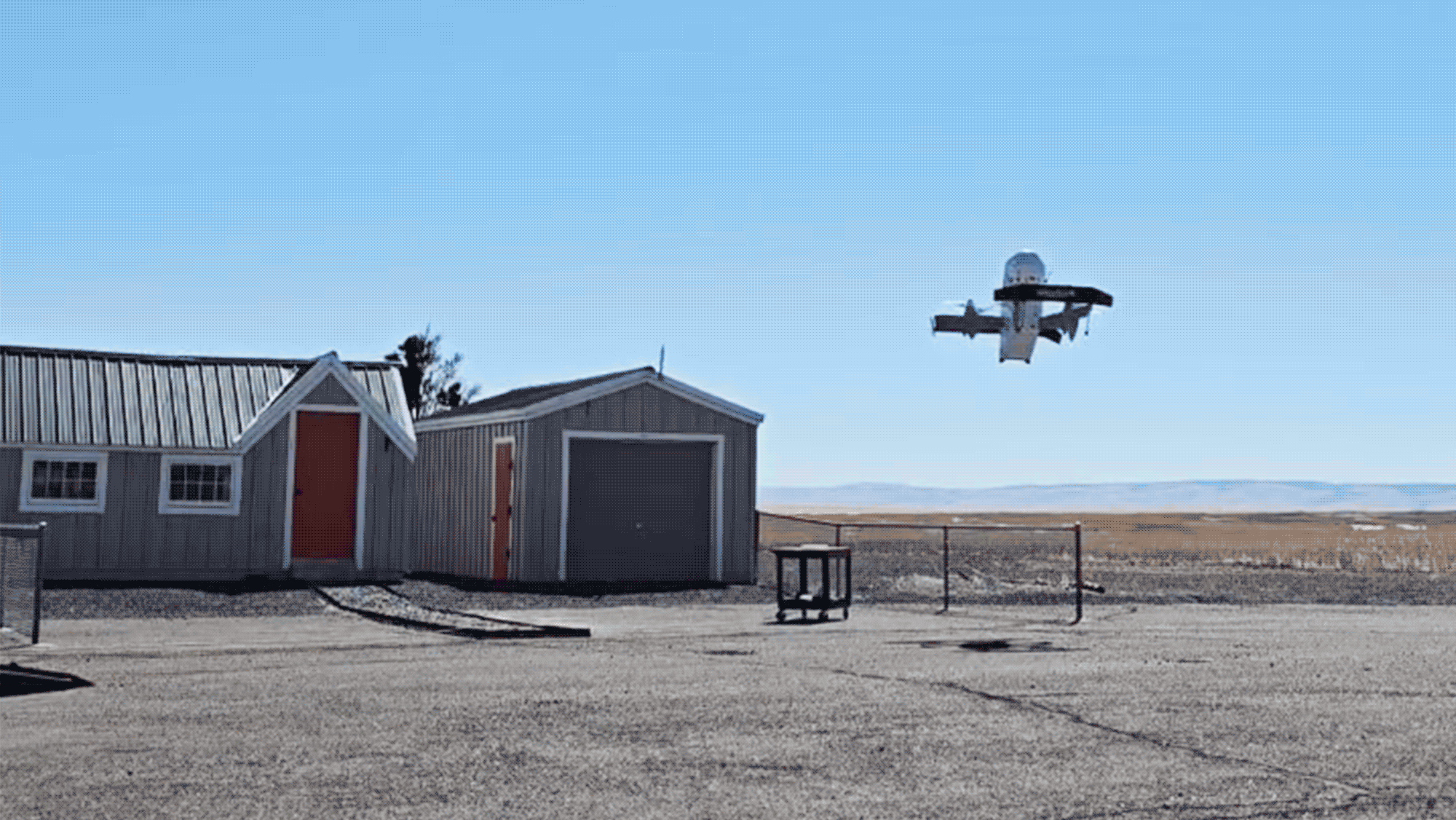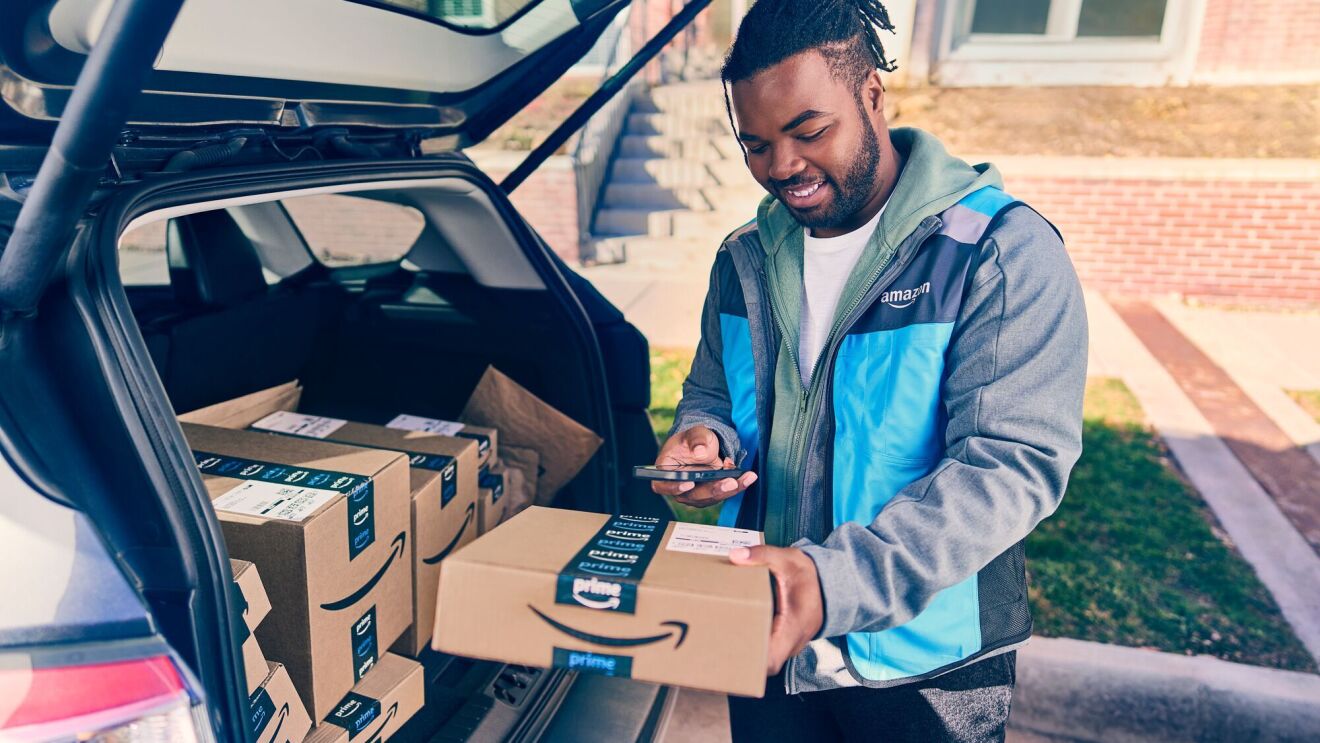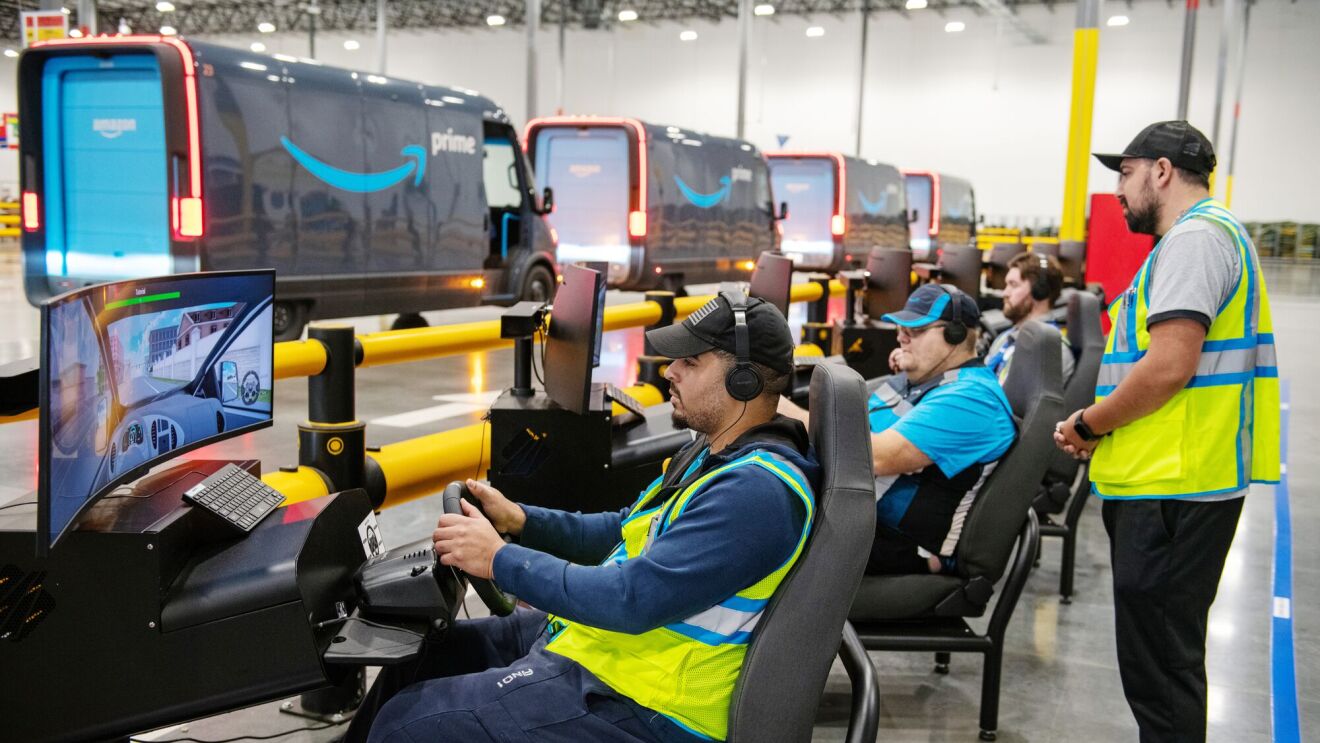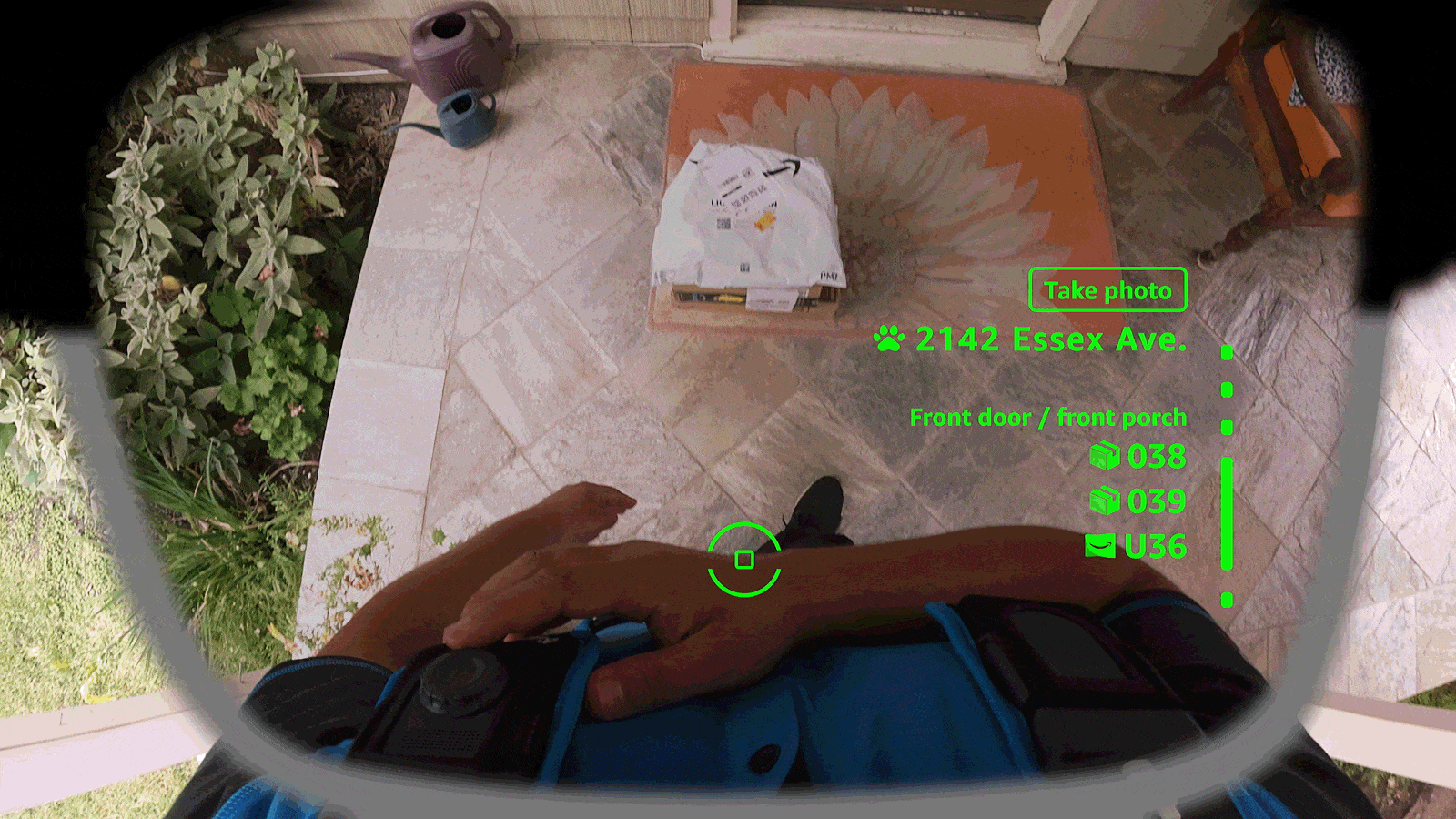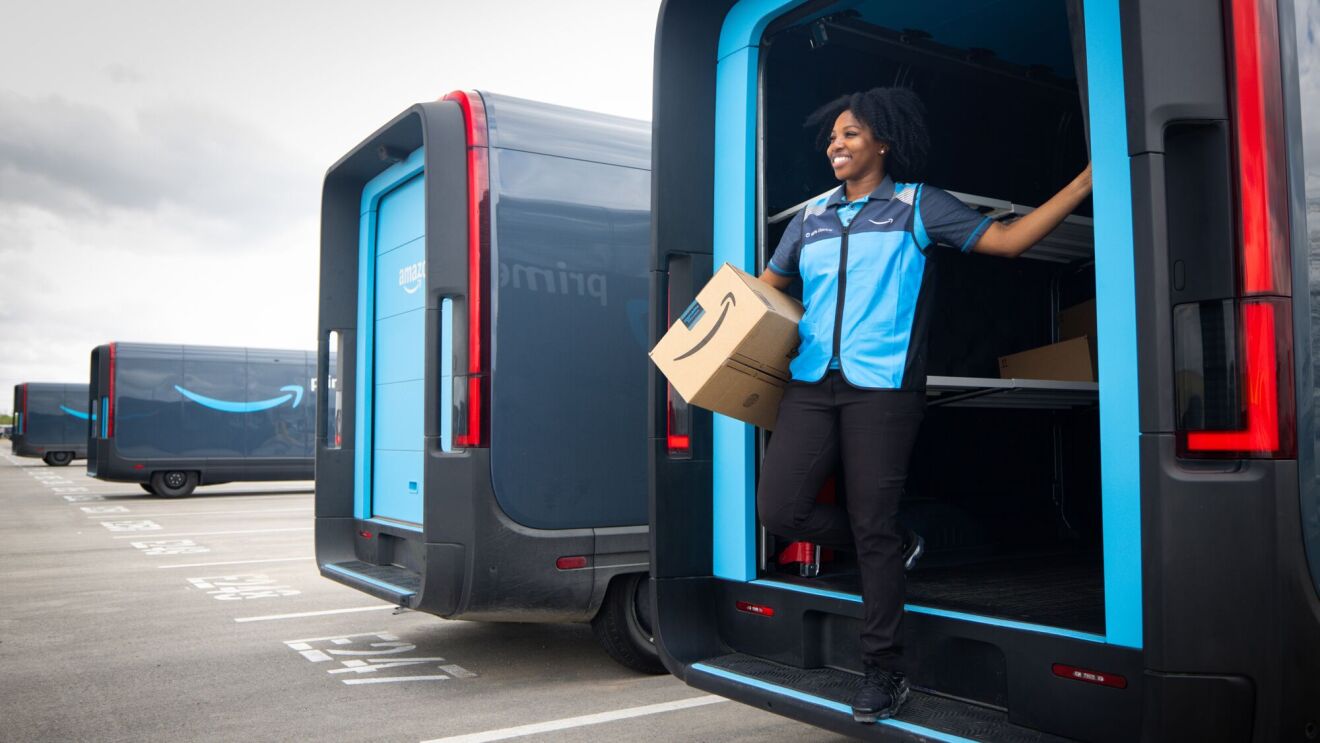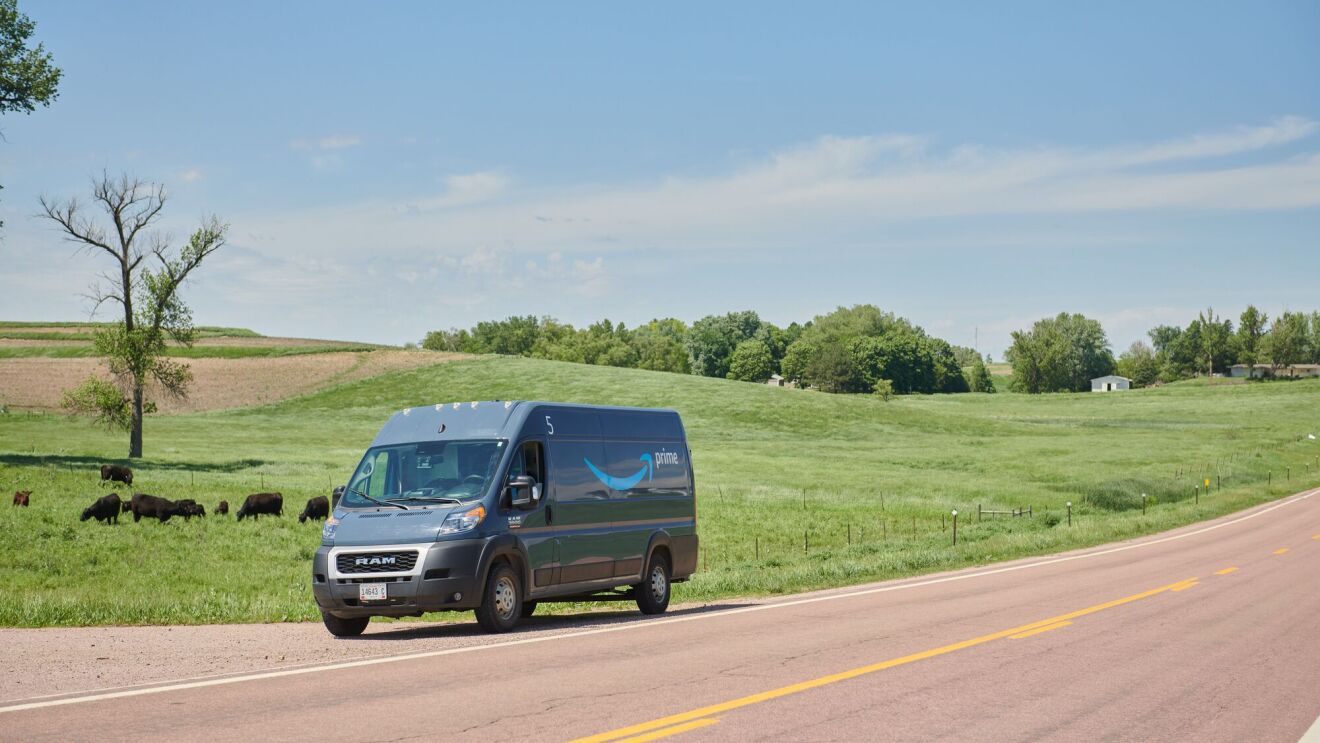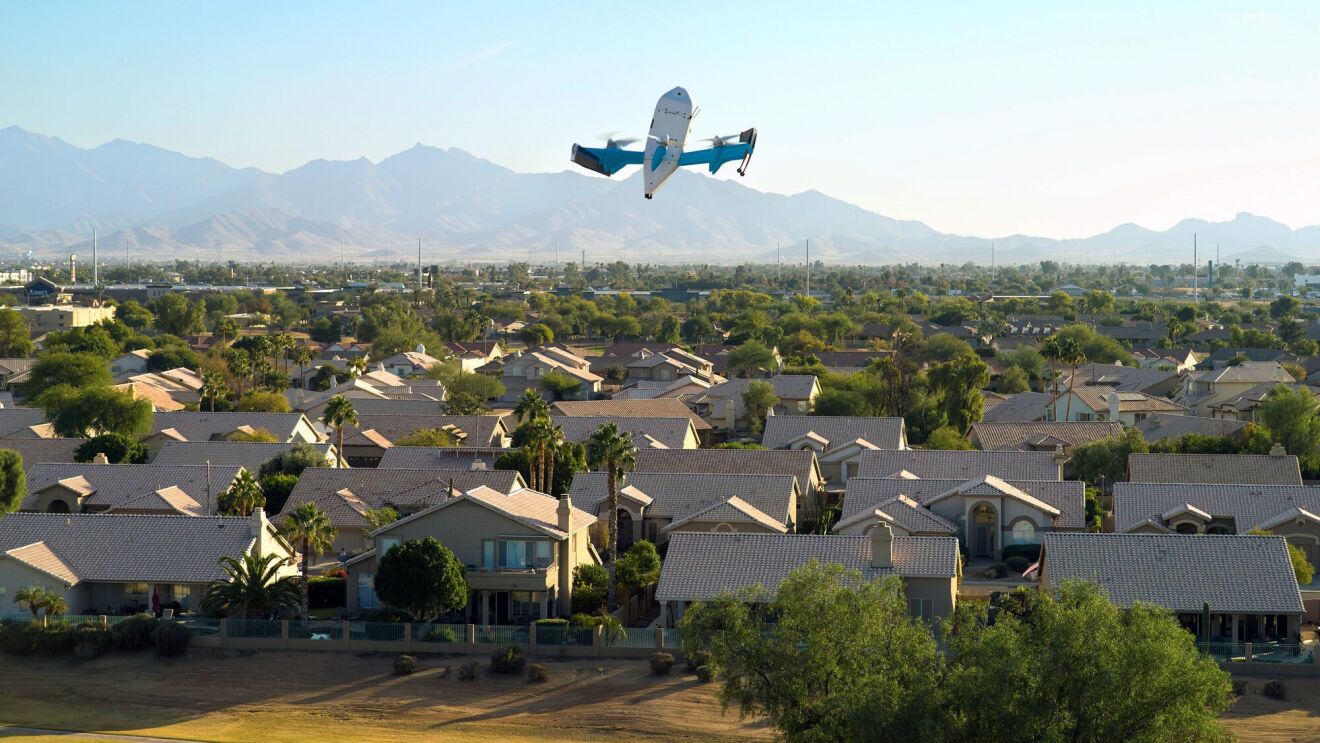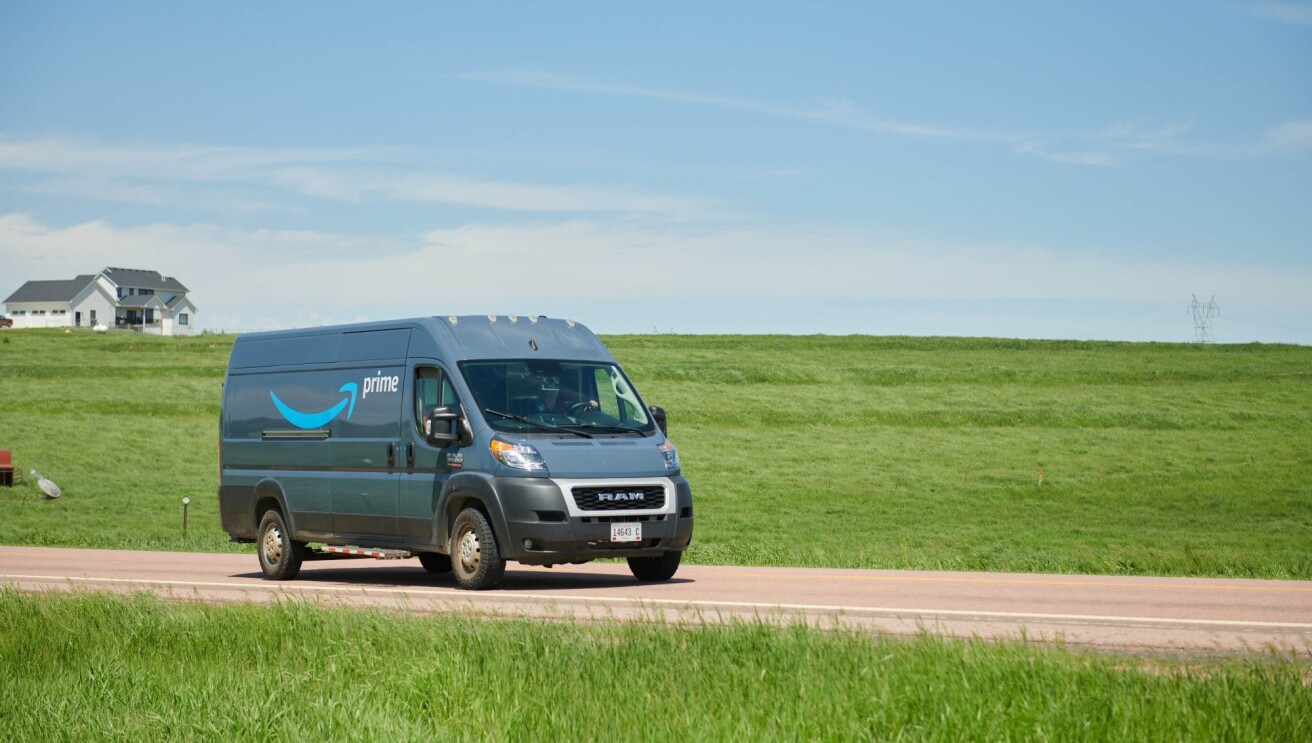Key takeaways
- Prime Air drones perform safe and controlled landings when conditions change.
- Onboard sensors scan for people, animals, and obstacles before selecting safe landing spots.
- A rapid response team recovers the drone while respecting property owners and regulations.
Safety informs every design decision at Prime Air. As we continue to expand our drone delivery service, our engineering teams have developed sophisticated systems that don't just plan for optimal flights, but also prepare for moments when conditions change unexpectedly.
Amazon's Prime Air drones deliver packages along precise flight paths between our delivery centers and customer backyards, flying at altitudes between 115 and 400 feet. Each route connects our delivery centers to customer delivery locations before returning to base. This carefully selected altitude range keeps drones above ground obstacles while maintaining separation from conventional air traffic.
While the vast majority of our drones complete their flights without any issue, they’re also engineered to adapt when conditions change. In rare situations, a drone may perform what we call a Safe Contingent Landing (SCL): a deliberate, controlled, and precautionary procedure that is part of the aircraft's mission profile.
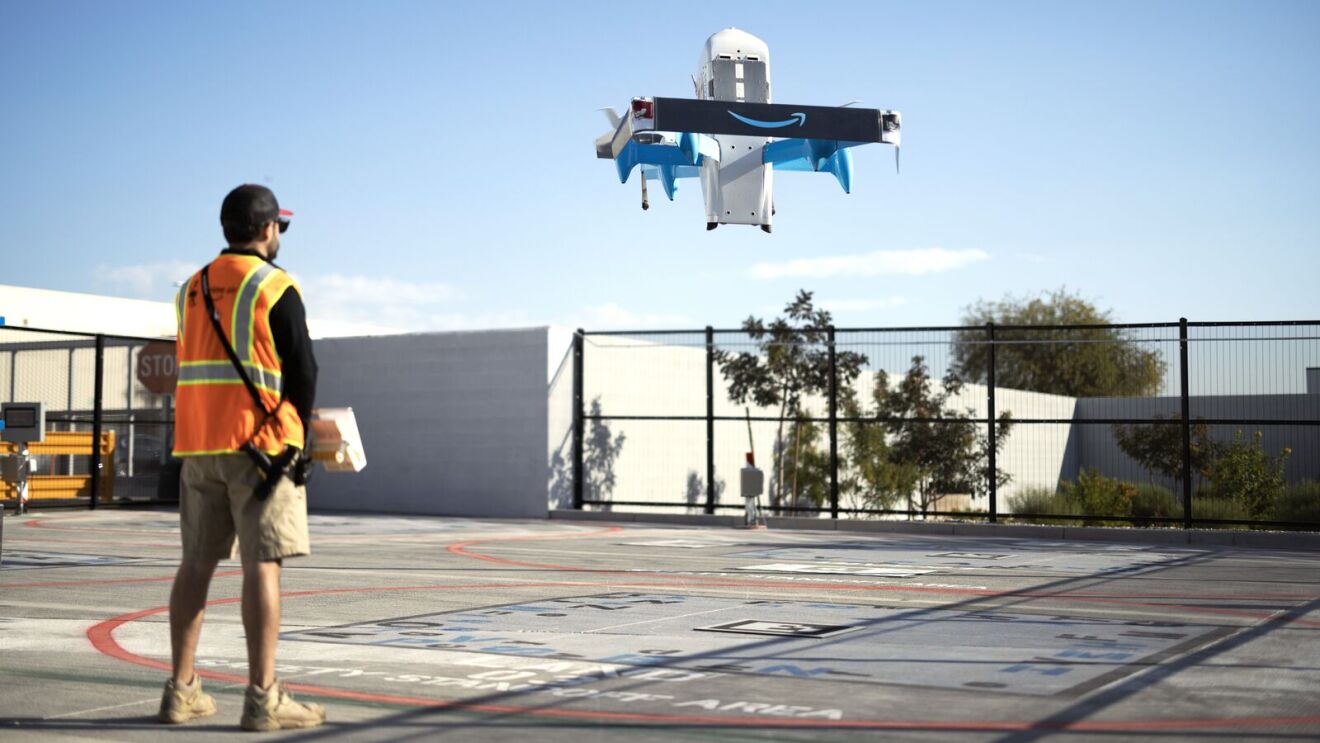
What is a Safe Contingent Landing?
A Safe Contingent Landing is our way of being prepared for the unexpected.
This procedure allows the drone to safely conclude its mission early when specific conditions warrant it, much like how a commercial airliner might choose to divert to another airport when the weather changes unexpectedly. It’s a planned safety feature designed to manage operational risks.
A Safe Contingent Landing may be initiated by:
- Unexpected weather conditions, such as sudden high winds or dusty conditions.
- If there are unexpected situations like a cell tower outage, or unexpected emergency air traffic.
- Rare instances where multiple failures in redundant systems occur.
When this happens, the drone follows a structured, well-tested, and FAA-approved procedure to land safely.
How the drone chooses where to land
Our Prime Air drones are hybrid aircraft. They take off and land vertically like helicopters and fly horizontally like airplanes to give us flexibility in a wide range of environments. When performing a Safe Contingent Landing, the drone smoothly transitions from forward flight to vertical mode along the planned route and carefully assesses its surroundings using the onboard Perception system while slowly descending to landing.
One important aspect of the perception system we have designed is to bias for safety when delivering packages (and landing when necessary). Using onboard cameras and radar, it scans the area below for:
- People or animals that need to be avoided.
- Obstacles like buildings, poles, or vehicles.
- Terrain or vegetation that could affect landing stability.
If the drone detects that the original delivery or the landing spot is not clear—perhaps there is a parked car or a new obstacle—it looks for nearby alternatives in real time. It does not just follow pre-loaded maps. Instead, it adapts to what it sees on the ground in that moment.
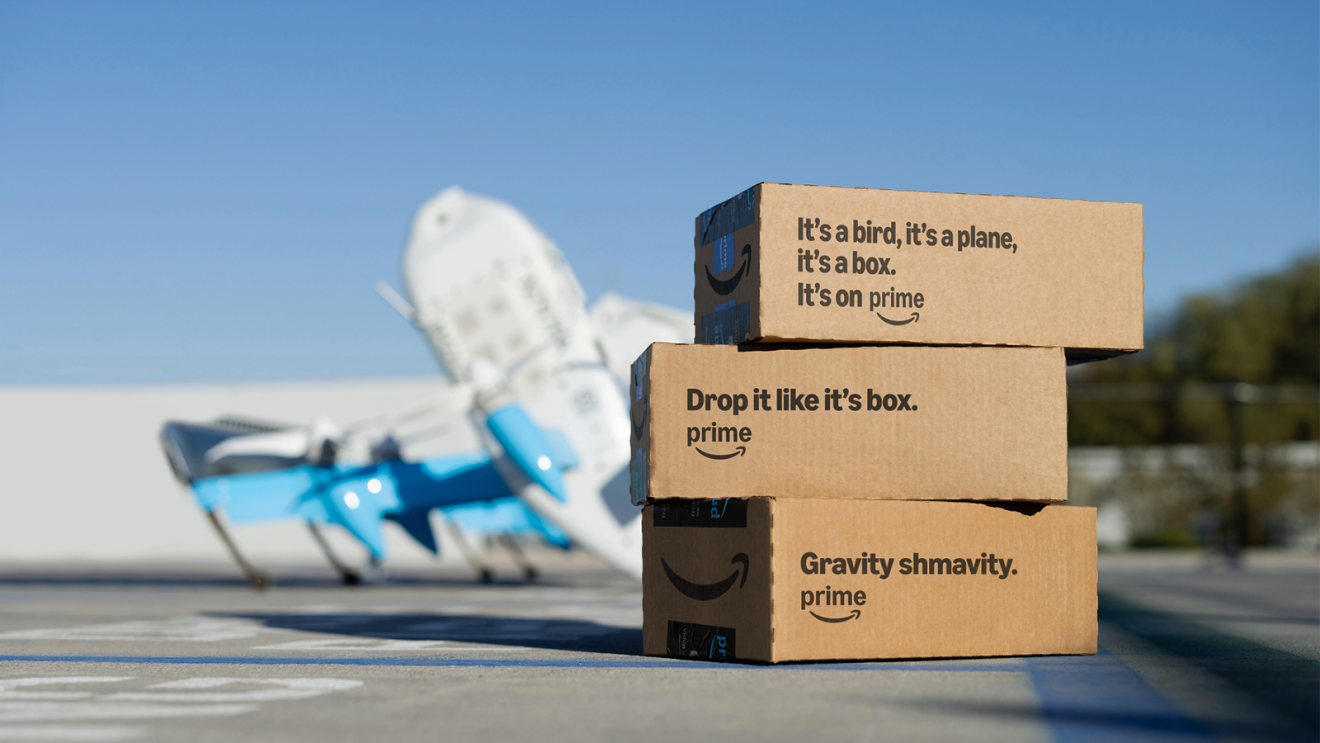
Designed for independence and rapid recovery
Our trained operations team monitors the path of every flight, but the landing decision itself can be made by the drone’s highly-automated navigation system. This means it can navigate on its own and react to real-world surprises like a fallen tree branch, a parked car, sudden wind gusts, or other uncharted obstacles.
That kind of independence helps the drone complete its mission safely, even when conditions change unexpectedly.
If a drone lands away from the delivery center, our recovery process kicks in right away.
This team is trained to be thorough and respectful of the community. First, it heads directly to the drone’s exact location. If the drone lands in a backyard or other inaccessible area, we work directly with the resident to get access. When needed, we also coordinate with local authorities to ensure everything is safe and respectful.
Once the drone is recovered, we bring it back to our base for a full inspection before it can fly again. We follow all FAA requirements in the execution of these responsibilities.
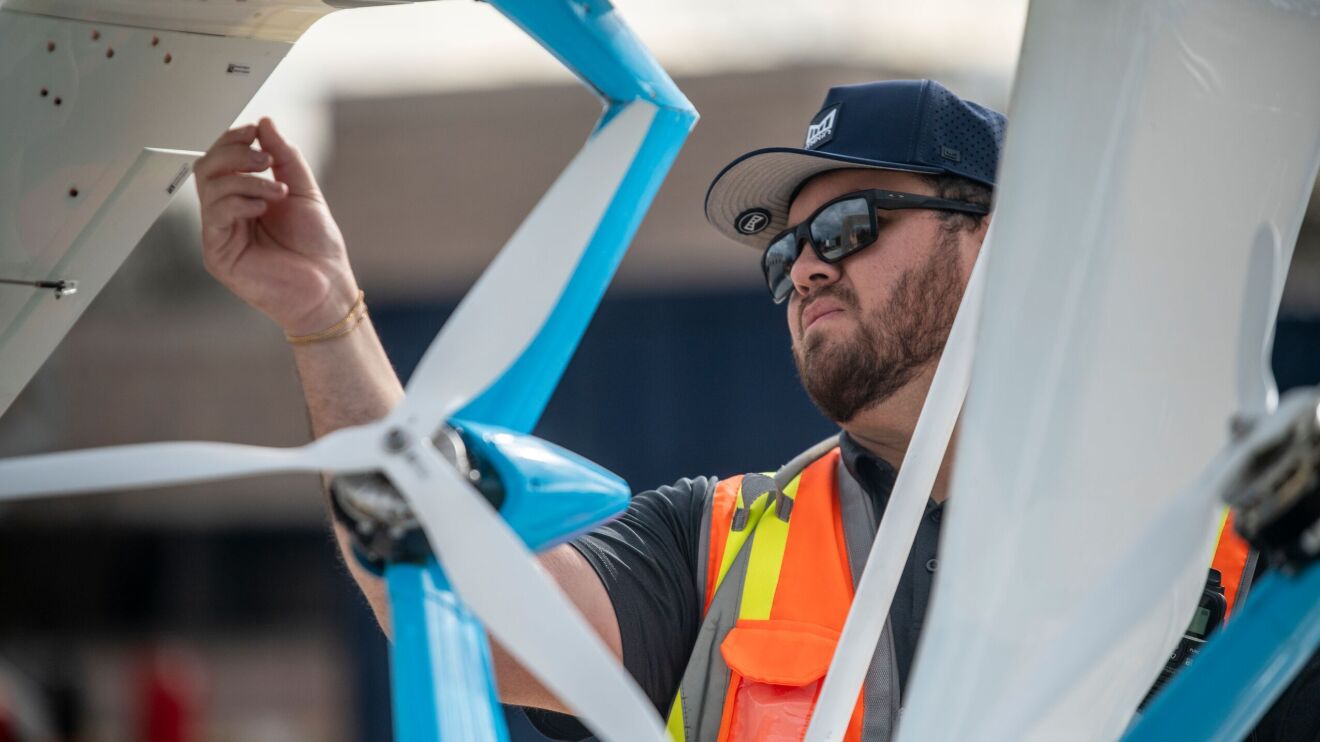
Rigorous testing ensures reliability
We test Safe Contingent Landing steps both in simulations and real-world flights. Our engineers even simulate failures by turning off systems like motors or sensors in the middle of a test flight to see how the drone keeps control. These tests confirm it can maintain control, adjust its route, and complete a safe landing.
We also test obstacle avoidance in challenging conditions. The drone must detect and react to blocked landing zones, foggy conditions, or unfamiliar objects to prove it can adapt safely.
This testing does not stop once we launch. Every design refinement and software update goes through the same process before it is cleared to fly deliveries again.
A planned capability, not an emergency response
Safe Contingent Landings were architected into the Prime Air system from the beginning to safely handle contingencies. They are planned steps that show how the system can handle surprises with care. By thinking through many different scenarios in advance, it can change its mission without adding new risk.
In the United States, we work closely with the FAA and local agencies to keep operations safe. We have clear reporting protocols and open communication with regulators whenever a landing happens outside the planned delivery path.
